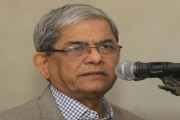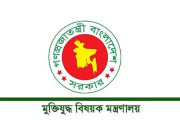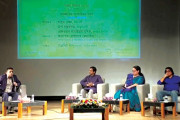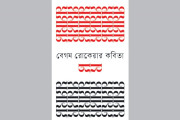।। Shamsad Mortuza ।।
Numbers are magical; they can evoke both shock and awe. Much like illusionists who mesmerise audiences by making objects vanish and reappear, those dealing with numbers can manipulate reality itself. However, the enchantment of statistics should not blind us to the sobering truth.
The Bangladesh Education Statistics 2022 asserts a commendable 74.66 percent literacy rate among those aged seven and above, with a slightly higher rate of 75.6 percent for the 15-and-above category (78.2 for males and 73.0 for females). A superficial glance at such figures might lead to self-congratulation, but a closer examination exposes a stark reality.
“Assessment by Citizens,” a survey by the Wave Foundation, supported by Oxfam IBIS and Street Child UK, put a dent on the magical act of throwing more students in the educational cauldron, hoping that they will all transform into literary wizards. Conducted in 2022 across 88 villages in Khulna and Rajshahi, focusing on 1,533 children aged 5-16, the survey revealed that, shockingly, 16.78 percent of boys and 15.22 percent of girls in this age group could not read English, with a similar percentage unable to speak it. Moreover, 84.85 percent of boys and 82.86 percent of girls struggle to comprehend English texts. It also found that 10.28 percent boys and 8.71 percent girls could not read Bangla, and 14.19 percent boys and 13.06 percent girls couldn’t identify single digits in mathematics.
The survey was carried out on marginalised children, 751 boys and 782 girls who attended school at one time or another, at their homes on the basis of the content of first- and second-grade books.
The findings show a predictable yet disheartening decline in education quality. The policymakers who appear in the message section of the Bangladesh Education Statistics 2022, however, pat themselves on the back for achieving high enrolment.
I look at the quality indicators for secondary, college and madrasa institutions between 2011 and 2022. The teacher-student ratio in secondary schools deteriorated, going from 1:30 in 2011 to 1:36 in 2022. The percentage of trained teachers in schools was 75.36 in 2011 and 67.91 in 2022. The same trend prevails in colleges, with the teacher-student ratio changing from 1:30 to 1:34. However, the situation is slightly better in madrasas.
The institutions, however, show significant growth in terms of electricity and internet connectivity, toilets, water, and solar panel facilities. In 2011, only 29.73 percent of schools had internet access, which rose to 83.12 in 2022. These establishments, it appears, are experiencing infrastructural growth. Yet, when you read that in FY2022-23, the government allocated only 1.83 percent of its GDP on education (far below the six percent mark prescribed by the UN), you realise that no real input has been made in quality enhancement.
The government’s repeated commitment to SDG 4, to ensure inclusive and equitable quality education and promote lifelong learning opportunities for all, seems hollow. The Wave Foundation’s assessment exposes the chink in the number armour prepared by the authorities. Our obsession with numbers over knowledge is like trying to build a skyscraper with a foundation made of hawai mithai. The candy floss castle might look impressive at first, but it’s bound to collapse under the weight of reality. As we pursue the elusive goal of higher enrolment, we’re inadvertently churning out a workforce that can fill out paperwork but struggles to comprehend the instructions.
The lack of quality education is affecting the very supply chain that should be producing the skilled workforce of tomorrow. This is one of the reasons why our wage-earners are struggling abroad. Compared to other nationals, our workers are finding it difficult to adjust and move up the career ladder. They are stuck in the lowest rung because of their lack of basic education.
The meagre budgetary allocation shows that our policymakers still find it difficult to comprehend education as a significant investment in human capital. Once you invest in education, you not only enable individuals to contribute to the economy and society at large, but also allow them to make informed decisions in life. Education must be a strategic, long-term investment that pays significant dividends to individuals and to the nation. There is a danger of equating the quality of education to access to toilets, water, solar energy, electricity, and internet data at schools. And the sooner our policymakers realise that, the better it is for the nation.
The heartbeat of quality education relies on good teachers—who inspire their students to be lifelong learners. Incentivising teachers is crucial to elevating the standard of education. Providing them with proper training, resources, and financial incentives will enhance their effectiveness. Creating a conducive environment for educators will not only improve the quality of teaching, but also contribute to retaining skilled professionals in the education sector.
There is something seriously wrong with our education system, where we tend to prioritise consultant-driven pedagogy or contractor-driven infrastructural growth. What is required is to make sure that the best educators choose teaching as their passion and profession and realise that education is a nation-building project, not a numbers game.
Dr Shamsad Mortuza is professor of English at Dhaka University.










































































































































































